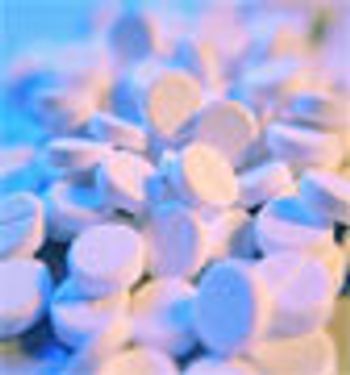
Progress in developing AIDS vaccines is focussing attention on the challenges involved in producing millions of doses for developing nations.

Progress in developing AIDS vaccines is focussing attention on the challenges involved in producing millions of doses for developing nations.

The establishment of a Medicare pharmacy benefit tops the to-do list of industry-related policy issues for 2003.

Bridging the gap between compliant spreadsheet production and limitations in available technology can be achieved by the use of custom-created electronic solutions.

It has been demonstrated that the existing FDA dose content uniformity test has very poor statistical relevance, which has resulted in the acceptance of poor quality batches and the rejection of good quality batches. By using Bayesian Inference, a much improved test has been produced that allows the quality of a batch of drug product to be determined accurately, using a suitable number of samples for the quality of the batch.

India's pharmaceutical industry, which is one of the country's major economic sectors, is poised to make signficant gains on the global market.

Reform legislation about generic drugs remains at the forefront of debate as innovator companies poise to challenge FDA proposals regarding patent laws.

FDA is juggling momentous changes, including new leadership and the proposed transfer of oversight for therapeutic biotech drugs.

Calibration management systems can lead to cost-effective global compliance when coupled with advances in information technology.

An all-electronic validation can provide storage costs savings and ensured document legibility.

The security of documents in the pharmaceutical industry has become a critical issue since the advent of electronic data transfer. Companies in Europe must comply with 21 CFR Part 11 if they sell in the US. The regulations also require that secure, computer-generated, time-stamped audit trails are used to record the date and time of operator entries and actions that create, modify or delete electronic records. In particular, the record change must not obscure previously recorded information.

FDA is set to revise CGMPs to encourage new manufacturing technologies and develop improved agency policies to ensure drug quality and safety.

Part II of this article describes the installation, operational, and performance qualification of an autoclave and discusses a system for change control.

The benefits of using computers and electronic records are proven in most fields of modern-day work, none more so than in laboratories. The opportunities for automation have improved productivity; the computational abilities have increased the accuracy of scientific data and allowed previously difficult or impossible analytical techniques to become routine affairs. This, in turn, has led to huge advances in drug discovery and in the chemical, biochemical and physical analysis of drugs and patients.

A limit test using ion mobility spectrometry (IMS) has the potential to dramatically reduce the time required for cleaning verification and cleaning method development. The traditional approach to cleaning verification, often using HPLC, is relatively resource intensive and can lead to significant delays in reporting results. The main advantage of IMS is that results are seen virtually instantaneously, so any necessary re-measurement can be done very quickly. If the results demonstrate cleanliness, production can resume in a matter of hours not days.

Part I of this article discusses examples for cycle types used in moist heat sterilization, parameter requirements for a standard cycle as defined by pharmacopeias, methods used to design sterilization cycles, and various approaches used to measure the efficiency of the sterilization process.

Congress debates legislation for a Medicare drug benefit while the industry expresses concerns about import control, drug counterfeiting, and patent rights.

In response to increasing concern about drug safety, FDA has implemented several administrative and policy changes, inclduing the new Office of Pharmacoepidemiology and Statistical Science and a renewed focus on risk assessment.

To fund expanded FDA operations designed to streamline drug development and approval, FDA and industry representatives have negotiated the Prescription Drug User Fee Act III.

Following a step-by-step approach to software development involves planning, analysis, construction, and implementation.

A new set of proposed GMP standards for excipents may present more problems than benefits.

FDA cites manufacturing difficulties as a main contributing factor to recent drug shortages, which mainly involve injectibles and vaccines.

ICH continues its efforts to establish universal drug development standards and testing as pharmaceutical manufacturers press for additional FDA guidance on specifications.

Proposed funding increases for FDA reflect plans to significantly increase user fees collected from manufacturers under the Presciption Drug User Fee Act.

FDA wants manufacturers to revise product labeling and packaging and step up adverse-event monitoring to reduce risky product use.

This study investigated the effectiveness of the direct extraction of tablets and shaking time on the disintegration of tablets, solubilization, and recovery of ibuprofen from tablets of various formulations, strengths, and spiked placebo.